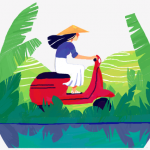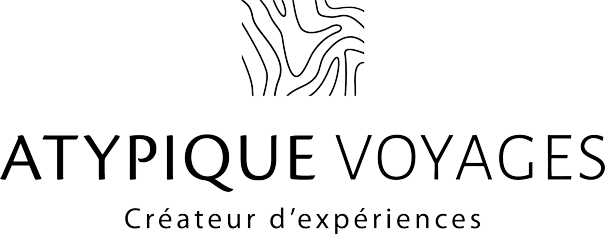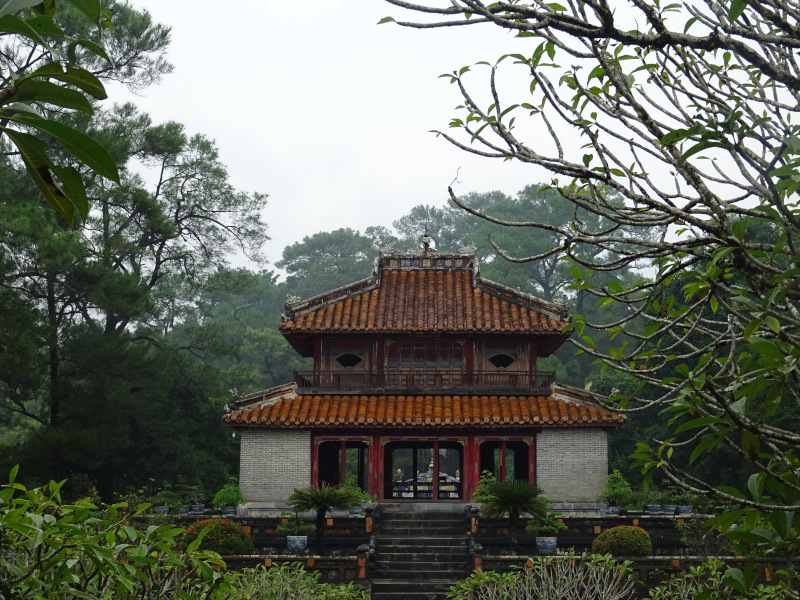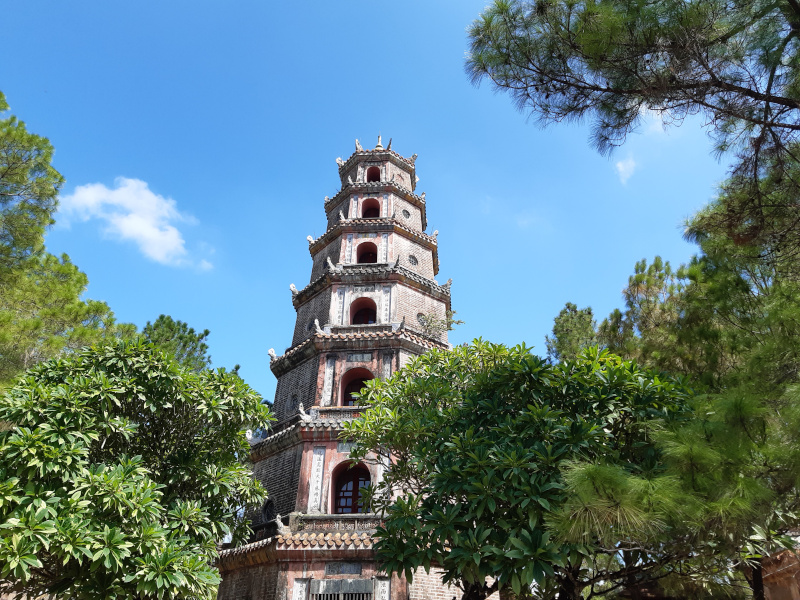Journey up the Perfume River of Hue and explore some of the most emblematic sites of the Nguyen Dynasty. Whether you are with your partner, family, or friends, this exciting visit will captivate young and old alike and will introduce you to the imperial history of the city while cruising on a traditional boat. What could be better than boat trips in Vietnam to create precious memories?
Located in the centre of the country, the city of Hue was the former capital of Vietnam. In 1802, Emperor Gia Long, founder of the Nguyen Dynasty, decided to move the capital from Hanoi to Hue, in order to unite the north and south of the country. It retained this status until 1945. You can still observe many imperial monuments from this period, such as the Citadel or the tombs. Although several of these sites were severely damaged during successive wars, major rehabilitation work was undertaken, and the city was classified as a UNESCO World Heritage Site in 1993.
ON THE PROGRAMME
After breakfast, your guide will pick you up at your hotel for a day of discovering the imperial city and its history. But be careful, this visit is not just a guided tour! You will have the chance to sail up the Perfume River in Hue aboard a dragon boat, a traditional boat of the city.
First stage: discovery of the Thien Mu pagoda, also known as the Pagoda of the Celestial Lady. Your guide will tell you the legend behind this name. Construction began in 1601 and from a modest pagoda it became one of the symbols of the city, especially with the addition of the octagonal tower in 1844. Carefully renovated following damage caused by the wars, the pagoda and its complex form an interesting site to discover, in which several dozen monks and their disciples live today.
You will then take the boat back for a two-hour sailing journey on the river to reach the tomb of Minh Mang. Along the water, you will observe the rural landscapes, to which the city is gradually giving way.
King Minh Mang designed the tomb, but he died before it was built. It was his son who built this tomb between 1841 and 1843.
Composed of several courtyards and esplanades, the tomb also houses a lake, crossed by three bridges. Each architectural component is home to many symbolic elements, reflecting the king’s place in society, the importance of the elements, and many beliefs of the time, which are still strongly held today.
After a well-deserved lunch, you will drive to the tomb of Khai Dinh.
The tomb of King Khai Dinh, who ruled from 1916 to 1925, is the most recently erected tomb you can visit. Its construction took 11 years. It is a mix of Vietnamese and French style, inspired by the King’s travels to France, and visible notably through the use of concrete. The contrast between the exterior of the buildings and the very colourful interior of the tomb is striking.
You will then take the road back to the city, visiting several unknown pagodas and monuments along the way. You will return from this day fascinated by the rich history of Hue and Vietnam!

Info Atypique
The name of the Perfume River of Hue leaves one dreaming, and one can wonder about its origin. Many legends exist on this subject, but it seems that it takes its name from medicinal plants located upstream of the city, whose particularly fragrant flowers release a delicate scent that spreads throughout the city when they fall in the water.









